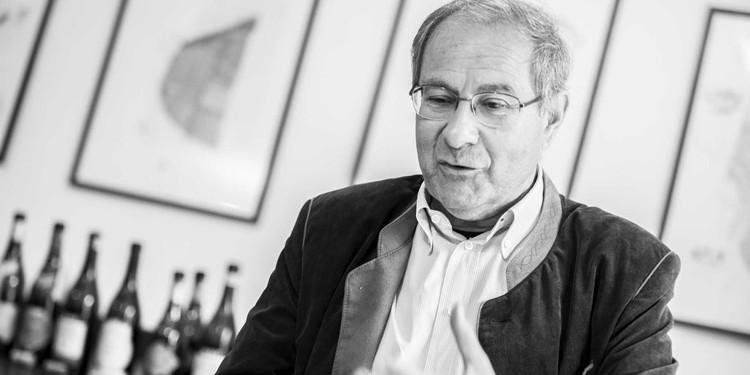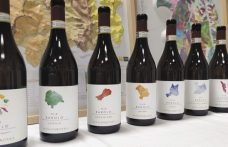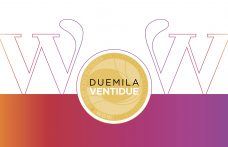
Recioto, finally the protagonist

Disregarded. Misunderstood. And to think that Recioto should be the King of Valpolicella. It is the certain father of Amarone and yet the son has overshadowed its glory. Therefore … the Masi winery’s idea to dedicate a wine tasting to the forefather of so much success was noble indeed. Eleven wines from six vintages. A vertical/horizontal tasting, i.e. comparing three types of Recioto (Casal dei Ronchi, Angelorum e Mezzanella) from different vintages from 1988 to 2010.
It was a unique experience, a joy veiled by a soupcon of melancholy, because Recioto is one of the most underestimated pearls of Italian winemaking, in Italy, and completely alien abroad, except for Great Britain where the sweet type (like fortified wine) is valued.
Sandro Boscaini, president of the Maison, spoke of his attempts to relaunch a modern take on Recioto, a natural sweet wine made from dried red grapes. He had even involved the ice wine wizard, the Italo-Canadian Don Ziraldo, to rethink Recioto, to moderate its tannic content and change the vinification techniques. Even the dark sour cherry colour, perhaps, is not appealing and a livelier ruby shade could have helped … But the colour is firmly established by now and will always remain intense, because the long maceration on the dried skins leaves no way out.
At the end however, it is a bit as if Recioto had shouted out its originality. And anticipating the conclusions of this tasting of 11 vintages, we can only rejoice at his resisting the temptations of the market. The best in the group: the 1988, a classic of sublime balance of alcohol, sugars and acidity from Casal dei Ronchi. Sweet? Perhaps. Only for the conceptual category. In fact, it is a great wine. Period. It would be very difficult to recognise a residual sugar of 74 grams/litre on the palate. Such is the complexity of this wine that our thoughts tend towards a dish of juicy meat roasted on a brazier, rather than a dessert.
Recioto: the King of Valpolicella
“Anyone who makes Amarone should first of all be able to make a good Recioto,” Boscaini claims. “There is a persuasive fermentative logic, that allows you to understand Amarone too, but only as a consequence. The best Recioto grapes come from the high hills, have low yields and maximum concentration. As a consequence it is impossible to completely ferment the quantity of sugars. Boscaini always says “as a child I used to hear that in order to make Recioto you needed “filagna” grapes, i.e. from a special row in the middle of the vineyard where the best grapes ripened, in lower quantities and with looser bunches.”
Returning to the virtues of Recioto, “we are restricted to two stereotypes that put Amarone and its noble father at risk,” maintains Boscaini: Recioto is trapped in the cage of sweet wines, whereas Amarone has become a simplistic synonym for partial drying. But Recioto expresses a much wider range (that sometimes makes you completely forget the sugar content) and, on the contrary, anything made with dried grapes risk being accepted as Amarone. Two obviously risky mistakes.
While we start the tasting, Andrea Dal Cin, technical manager of Masi, explains some of the features of Recioto, “it is made after a very long drying process and prolonged fermentation that inhibit yeast activity due to its high concentration and alcohol content. The grapes dry and lose 35-45 % of their weight. They dry on mats that used to be produced with local marsh reeds, found along the “vai” (valleys) or on the banks of the Adige river. Now bamboo canes are used, replaced every 5-7 years and partially sterilized with steam (105-110°C).
Masi pays particular attention to microbiological phenomena during fermentation. They have even identified yeast strains that ferment well under osmotic pressure (with lots of alcohol and high sugars in the initial stage). “We identified our yeast, the Saccaromyces cerevisiae strain,” says Dal Cin, “selected during drying and able to ferment at high levels of alcohol. We are one of the few wineries to have our own yeast.” It has been used for the second year running and is produced by Lallemand just for Masi, with an agreement to market it – only if approved – under the name Masy.
But let’s get back to the Recioto tasting.
They are rarities, a total of 10 thousand bottles are produced per year. A gem and a drop in the ocean in the Masi world, but obviously a choice made from the heart and tradition.
1. Casal dei Ronchi Recioto della Valpolicella Classico DOC 1988 – The rim is slightly orange, but the colour is still incredibly intact considering its 25 years of age. Great concentration visible in the glass, with pronounced legs. It is initially ethereal on the nose, then follow aromas of cherries in alcohol, nuts, herbs, bitter cocoa and tobacco. The finish is almost “restrained” sweetness, theoretical, lingering with a delicious chocolatey close. Residual sugar: 74 grams/litre.
2. Mezzanella Recioto Classico Superiore DOC 1990 – A good vintage. The colour is brighter and less intense. On the nose there are notes of pastries, chocolate cake and raspberries. A balsamic character dominates the palate. It is less concentrated than the Casal Ronchi, rich in tannins. Halfway between a Recioto and an Amarone. But isn’t it supposed to be a sweet wine? You could easily put this wine on the table with a rich and perhaps slightly sweet and sour dish. Residual sugar: 26 g/l.
3. Classico degli Angeli Recioto della Valpolicella Classico Superiore DOC 1990 – The colour is intact, but it is slightly oxidized on the nose: ethereal, phenolic, hairspray. Not very fruity, but a set of herb samples. Its main qualities seem to be length, freshness on the palate, a slightly citrusy finish. Residual sugar: 42g/l.
4. Casal dei Ronchi Recioto della Valpolicella Classico DOC 1990 – Finally we find cherries, undergrowth and a hint of mushroom. It is rich and silky on the palate, in this case it is actually sweet. It has concentration and tannins. “This is the recioto,” Sandro Boscaini says. Residual sugar: 68 g/l
5. Mezzanella Amandorlato Recioto della Valpolicella Classico DOC 1997 (2 thousand bottles, but they can’t always manage it…) – Mezzanella is the name of a particular vineyard, inside two valleys. Also in this case herbs are more perceptible than fruit.It has a bitterish finish on the palate. Again, a low residual sugar.
6. Amabile degli Angeli Recioto della Valpolicella Classico DOC 1997 – We are entering an intensely fruity area, of ripe sour cherries. Great softness on the palate, lingering with a sweet fruity finish. Residual sugar: 52.5 g/l.
7. Casal dei Ronchi Recioto della Valpolicella Classico DOC 1997 – Intense sensations of cherries and fresh berries, prunes and cocoa. The use of cherry wood is perceptible, revealing slight oxidation even in youth. Striking for its intense colour. Decidedly sweet. Residual sugar: 51.5 g/l.
8. Mezzanella Amandorlato Recioto della Valpolicella Classico DOC 2007 – Ripe cherries, plums, violets, reminiscent of a great Amarone on the nose, slightly balsamic, undergrowth, pencil lead, toasting. Caressing on the palate and the sweetness closes with tannic astringency (a little harsh) but with a great chocolate finish. Residual sugar: 46.5 g/l.
9. Amabile degli Angeli Recioto della Valpolicella Classo DOC 2007 – Simple, approachable, with fruit in alcohol and essence of herbs. Residual sugar: 93 g/l.
10. Angelorum Recioto della Valpolicella Classico DOC 2009 – Intense bouquet of fresh fruit, with nuances of pencil lead. Striking density on the palate, but decidedly sweet. Residual sugar: 81.8 g/l
11. Casal dei Ronchi Recioto della Valpolicella Classico DOCG 2010 – It has a considerable breadth of aromas, rather simple and young. On the palate it is still rather unbalanced, divided between tannic astringency (despite the excellent work) and sugars that are still untamed. Residual sugar: 65 g/l
To sum up: it’s a crime to not give Recioto the time it deserves. In every sense. Anyone tasting it must get ready for a meditated tasting, in order to capture its complexity. And Recioto needs time … when it is young it does not express itself as well as it should and risks being pushed into the category of sweet wines. Whereas it can go much further.
See also ...




The battle continues with the new Chianti Gran Selezione
On 11th November, the Chianti Wine Consortium announced Read more
